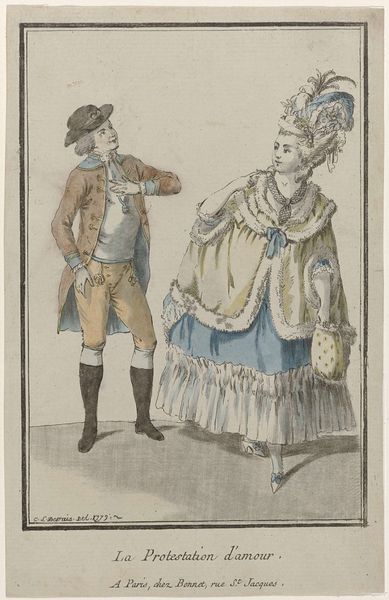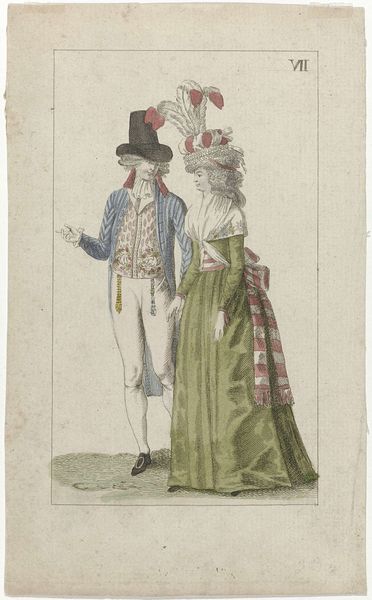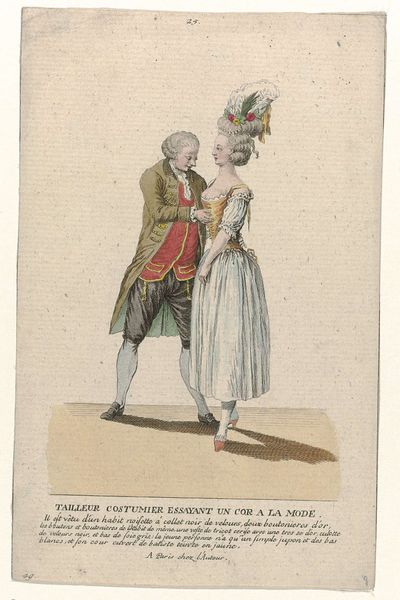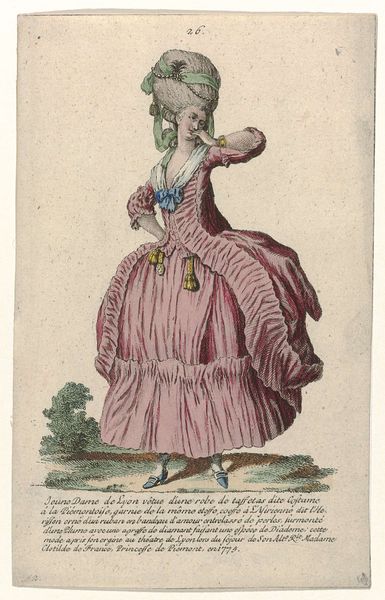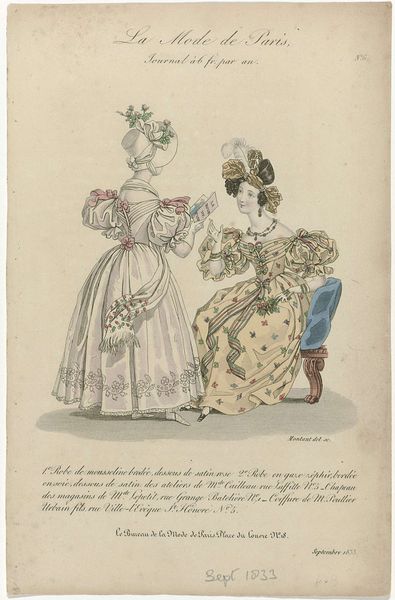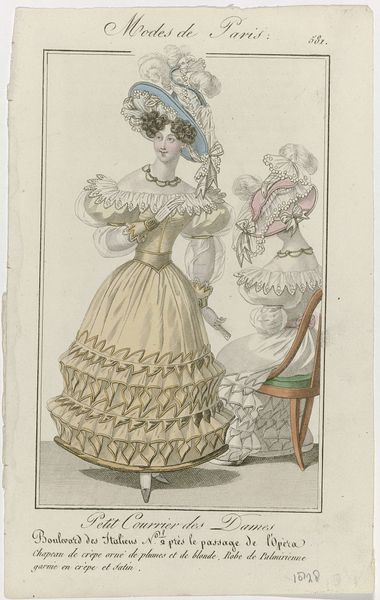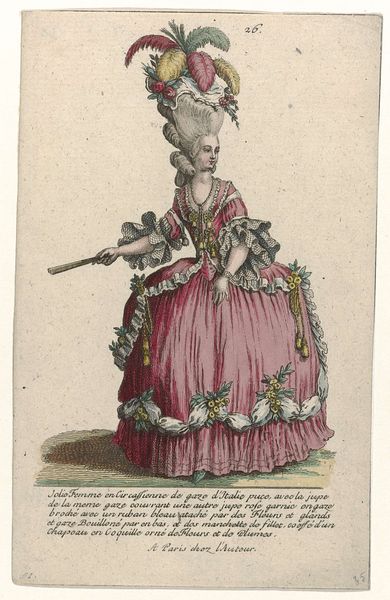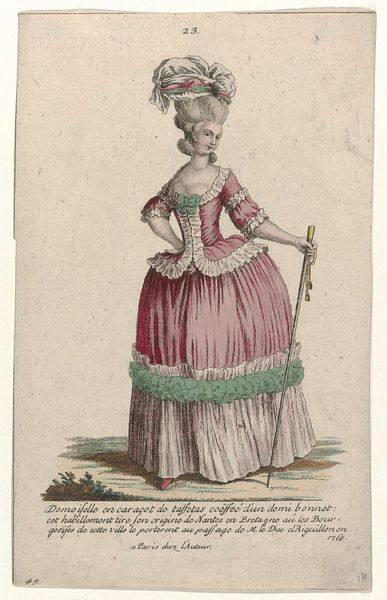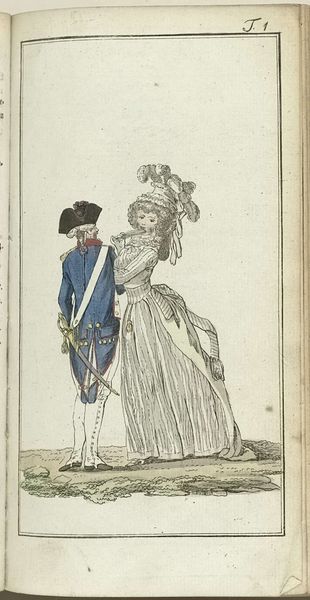
Gallerie des Modes et Costumes Français, 1785, nr. 38, Kopie naar Y 133 : Jeune Mariée que l'on mene a l'autel (...). c. 1785
0:00
0:00
Dimensions: height 274 mm, width 198 mm
Copyright: Rijks Museum: Open Domain
This print, made around 1785 by Johann Martin Will, depicts a young bride being led to the altar, adorned in finery. The bridal flowers she carries, echoing the floral garlands on her dress, are ancient symbols. Consider Flora, the Roman goddess of springtime and flowers. Her image, often wreathed in blossoms, has persisted through the ages, resurfacing in Renaissance paintings and now here, in the accoutrements of a bride. These flowers are not mere decoration. They evoke cycles of rebirth and growth, a visual echo of the hopes and anxieties surrounding new beginnings. The act of carrying flowers connects deeply to collective memory. Throughout time, the fragility and beauty of blooms have mirrored the fleeting nature of life and love. Thus, the bride's flowers become a potent symbol, engaging viewers on a subconscious level, stirring emotions tied to our shared cultural past. This is how visual symbols work, isn’t it? We see their evolution and their cyclical return, as they resurface, evolve, and take on new meanings in different historical contexts.
Comments
No comments
Be the first to comment and join the conversation on the ultimate creative platform.
